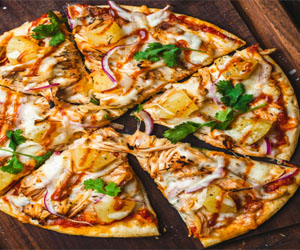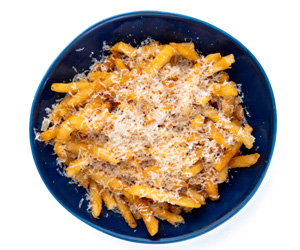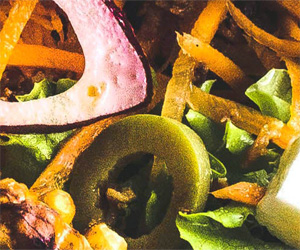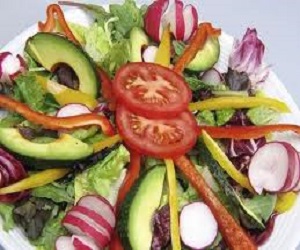


The Aromatic Soul Of Mediterranean Cuisine

Mediterranean cuisine is celebrated for its delectable flavors, and at the heart of this culinary tradition lie the aromatic Mediterranean herbs. These flavorful and fragrant herbs play a central role in defining the tastes and aromas of Mediterranean dishes. From oregano and basil to rosemary and thyme, let's explore the enchanting world of Mediterranean herbs.
Oregano: Oregano is perhaps one of the most iconic Mediterranean herbs. With a robust, earthy flavor, it's widely used in dishes from Italy to Greece. Oregano adds depth to pizzas, pasta sauces, and grilled meats. It's also known for its antioxidants and potential health benefits, making it more than just a flavor enhancer.
Basil: Basil is another herb synonymous with Mediterranean cuisine, particularly Italian dishes like pesto. This herb's sweet and slightly peppery notes add freshness to salads and brighten up sauces. Basil is a staple in the Mediterranean diet and is appreciated not only for its taste but also for its potential anti-inflammatory and antibacterial properties.
Rosemary: With its pine-like aroma and robust flavor, rosemary is a quintessential Mediterranean herb. It's often used in roasting meats and vegetables, infusing dishes with a delightful earthiness. Rosemary's association with improved memory and cognitive function makes it a symbol of both taste and health in Mediterranean cuisine.
Thyme: Thyme's aromatic and slightly minty notes make it a versatile herb in Mediterranean cooking. It's used in a wide range of dishes, from soups and stews to grilled seafood. Thyme is also valued for its antimicrobial properties and potential to boost the immune system.
Mint: Mint is another herb with a strong presence in Mediterranean cuisine. Its refreshing flavor complements salads, sauces, and desserts. Mint tea is a common beverage in the region, celebrated for its digestive and soothing qualities.
Parsley: Parsley, with its fresh and slightly peppery taste, is a ubiquitous herb in Mediterranean cooking. It's used to garnish dishes and is an essential ingredient in many Mediterranean sauces and salads. Parsley is known for its high vitamin K content, contributing to bone health and overall well-being.
Cilantro: Although often associated with Asian and Latin American cuisines, cilantro has made its way into Mediterranean dishes, especially in Middle Eastern cooking. Its citrusy and herbaceous flavor adds depth to dishes like falafel and tabbouleh.
Sage: Sage's slightly savory and earthy taste is used to flavor Mediterranean dishes, particularly in the Mediterranean basin. It pairs wonderfully with poultry and lends its flavor to stuffing and roasted meats.
Culinary Traditions: Mediterranean herbs are integral to the culinary traditions of the region. They're often used to enhance the natural flavors of fresh, seasonal ingredients, making Mediterranean dishes a harmonious blend of tastes and aromas.
Health Benefits: Beyond their culinary use, Mediterranean herbs are valued for their potential health benefits. Many of them are rich in antioxidants and possess antimicrobial properties, contributing to overall health and well-being. Their consumption is associated with reduced inflammation, improved digestion, and enhanced cognitive function.
Mediterranean herbs are the aromatic soul of Mediterranean cuisine. They infuse dishes with an array of flavors, from the fresh and bright to the savory and earthy. They're not only the key to delightful meals but also to a healthy and vibrant lifestyle. By embracing the diverse and tantalizing world of Mediterranean herbs, you can savor the essence of this remarkable culinary tradition and improve your well-being in the process.
Understanding The Basics
 Bread And Baked Goods: Wheat-based bread, pastries, and cakes are rich in gluten.
Bread And Baked Goods: Wheat-based bread, pastries, and cakes are rich in gluten.
Pasta: Traditional wheat pasta is a gluten-containing staple.
Cereals: Many breakfast cereals are made from gluten-containing grains, though gluten-free alternatives are available.
Beer: Most beers are brewed with barley or wheat, making them a source of gluten.
Processed Foods: Gluten can hide in various processed foods, from salad dressings to sauces, and even some candies.
Pizza: Pizza crust is traditionally made from wheat dough, but gluten-free options are widely available.
Flour And Breading: Flour derived from wheat is used for breading, thickening, and in baking.




The Power Of Essential Vitamins
 Vitamin E (Tocopherol): As an antioxidant, vitamin E helps protect cells from damage and supports skin and eye health. It's found in nuts, seeds, and vegetable oils.
Vitamin E (Tocopherol): As an antioxidant, vitamin E helps protect cells from damage and supports skin and eye health. It's found in nuts, seeds, and vegetable oils.
Vitamin K (Phylloquinone): Vitamin K is essential for blood clotting and bone metabolism. Dark leafy greens and broccoli are rich sources.
The Importance Of Balanced Vitamin Intake
Balancing your intake of essential vitamins is critical to maintaining overall health and well-being. An unbalanced diet that lacks these essential nutrients can lead to vitamin deficiencies, which are associated with a variety of health issues. On the other hand, excessive intake of some vitamins can have adverse effects. Striving for a varied diet that includes a wide array of nutrient-rich foods is the best approach.
Supplements: A Complementary Strategy
In cases where dietary intake of essential vitamins is insufficient or when specific medical conditions or dietary restrictions apply, supplements can be a valuable addition to your routine. However, it's important to consult with a healthcare professional before starting any supplementation regimen to avoid overconsumption, which can be harmful.
A Marvel Of Precision And Craftsmanship
 Espresso machines are a complex amalgamation of components, each with a unique role in creating the perfect shot of espresso:
Espresso machines are a complex amalgamation of components, each with a unique role in creating the perfect shot of espresso:
Boiler: The heart of the machine, the boiler heats water to the ideal brewing temperature, typically between 195°F and 205°F (90°C to 96°C). It is equipped with a pressure release valve to maintain precise pressure levels.
Pump: Modern espresso machines often feature a pump to ensure a consistent and controlled flow of water through the coffee grounds. The pump generates pressure, which is vital for creating the crema—a signature layer of golden froth on top of the espresso.
Portafilter: The portafilter is the device used to hold the coffee grounds during brewing. It is an essential tool in distributing the grounds evenly and consistently, contributing to the even extraction of flavors.
Group Head: The group head is the component that connects the portafilter to the machine. It plays a crucial role in maintaining a stable temperature and pressure during the brewing process.
The Power Of Food Beyond The Body
 At its core, nourishing the soul through food is about more than filling our bellies; it's about filling our hearts and spirits. This concept is deeply rooted in the idea that food can offer comfort, healing, and a sense of connection. Here are some ways in which food nourishes our souls:
At its core, nourishing the soul through food is about more than filling our bellies; it's about filling our hearts and spirits. This concept is deeply rooted in the idea that food can offer comfort, healing, and a sense of connection. Here are some ways in which food nourishes our souls:
Comfort And Familiarity: There's a reason why certain foods are called "comfort food." These are the dishes that evoke a sense of nostalgia, reminding us of simpler times and the warmth of home. Whether it's a steaming bowl of chicken soup or a slice of homemade apple pie, these foods provide a feeling of comfort that nourishes the soul and eases stress.
Cultural Connection: Food is a powerful means of connecting with one's cultural roots. Traditional dishes and recipes passed down through generations carry the history and identity of a community. Preparing and savoring these foods is a way of staying connected to one's cultural heritage and, in turn, nourishing the soul.
Shared Experiences: Food has a unique ability to bring people together. Sharing a meal with loved ones, friends, or even strangers can foster a sense of community and belonging.
Preserving Culinary Traditions Across Generations
 Timeless recipes have a universal appeal that transcends borders and cultures. While the specific dishes may differ from one region to another, the concept of time-honored cuisine is present everywhere. Whether it's the hearty, slow-cooked stews of Europe, the bold and flavorful curries of India, or the simple yet elegant dishes of Japan, every culture has its own set of timeless recipes that reflect its culinary heritage.
Timeless recipes have a universal appeal that transcends borders and cultures. While the specific dishes may differ from one region to another, the concept of time-honored cuisine is present everywhere. Whether it's the hearty, slow-cooked stews of Europe, the bold and flavorful curries of India, or the simple yet elegant dishes of Japan, every culture has its own set of timeless recipes that reflect its culinary heritage.
Nourishing The Spirit With Every Bite
 The beauty of soul-soothing dishes is that they transcend borders and cultures. While the specific recipes may differ, the concept of comforting food is universal. In the United States, it might be a plate of buttery mashed potatoes and gravy. In Japan, it could be a simmering bowl of miso soup. In India, a fragrant pot of dal and rice. The world is filled with these culinary hugs that have been perfected over generations.
The beauty of soul-soothing dishes is that they transcend borders and cultures. While the specific recipes may differ, the concept of comforting food is universal. In the United States, it might be a plate of buttery mashed potatoes and gravy. In Japan, it could be a simmering bowl of miso soup. In India, a fragrant pot of dal and rice. The world is filled with these culinary hugs that have been perfected over generations.
Soul-soothing dishes hold a special place in the hearts of many not only because of their delectable flavors but because they provide a sense of belonging and security. These are the meals that a loved one might prepare when you're feeling under the weather or after a challenging day. The aroma of a soul-soothing dish simmering on the stove is often enough to ease stress and bring comfort.
Moreover, the process of preparing soul-soothing dishes can be a form of therapy in itself. The act of chopping, sautéing, and stirring can be meditative, providing a sense of calm and mindfulness.
The Joy Of Culinary Creativity
 Learning And Growth: Kitchen experiments are an invaluable source of learning and growth in the world of cooking. They offer an opportunity to expand one's culinary skills and knowledge. Whether it's trying a new cooking method, experimenting with unusual ingredients, or attempting a complex recipe, these experiments push cooks to develop new techniques and broaden their culinary repertoire.
Learning And Growth: Kitchen experiments are an invaluable source of learning and growth in the world of cooking. They offer an opportunity to expand one's culinary skills and knowledge. Whether it's trying a new cooking method, experimenting with unusual ingredients, or attempting a complex recipe, these experiments push cooks to develop new techniques and broaden their culinary repertoire.
Culinary Innovation: Some of the most iconic dishes in the culinary world have been born out of kitchen experiments. Creative chefs who dared to experiment with their ingredients and techniques have given us classics like the chocolate lava cake, the Caesar salad, and even the sandwich. Innovation in the kitchen is often a result of daring to explore the unknown.
Flavor Exploration: Kitchen experiments are a gateway to the exciting world of flavor exploration. Trying out new ingredients, herbs, spices, and flavor combinations is an adventure for the palate. It's an opportunity to discover tastes that you might never have encountered otherwise. These flavor explorations can inspire new recipes and provide fresh ideas for cooking.
The Art Of Satisfying Palates
 The Culinary Playground: The kitchen is a canvas, and tasty creations are the masterpieces. It's a space where culinary artists, from amateur home cooks to seasoned professionals, experiment with flavors, ingredients, and techniques to craft dishes that tantalize the taste buds and ignite the senses. Tasty creations are the result of imagination, innovation, and the passion for food.
The Culinary Playground: The kitchen is a canvas, and tasty creations are the masterpieces. It's a space where culinary artists, from amateur home cooks to seasoned professionals, experiment with flavors, ingredients, and techniques to craft dishes that tantalize the taste buds and ignite the senses. Tasty creations are the result of imagination, innovation, and the passion for food.
Flavorful Alchemy: At the heart of tasty creations lies the art of flavor alchemy. It's about understanding how different ingredients interact, the balance between sweet and savory, the harmony of contrasting textures, and the science behind seasoning. Each dish is a testament to the chef's ability to combine these elements in a way that surprises and delights.
Cultural Fusion: Tasty creations often draw inspiration from diverse culinary traditions. Exploring flavors from around the world adds a dimension of cultural fusion to these creations. The ability to blend the spices of India with the noodles of Thailand, or the cheeses of France with the bread of Italy, creates a global palate that is both exciting and delectable.